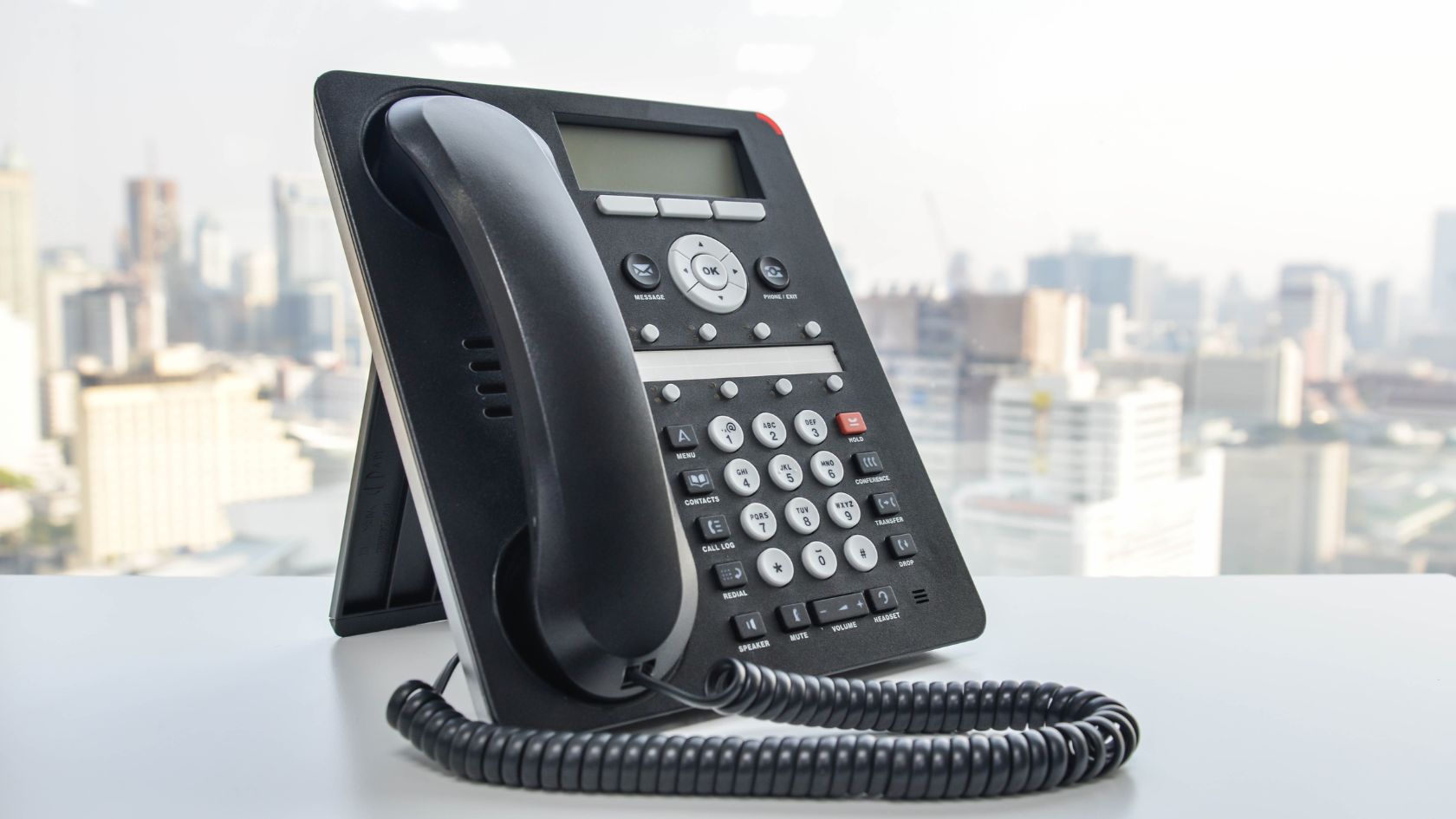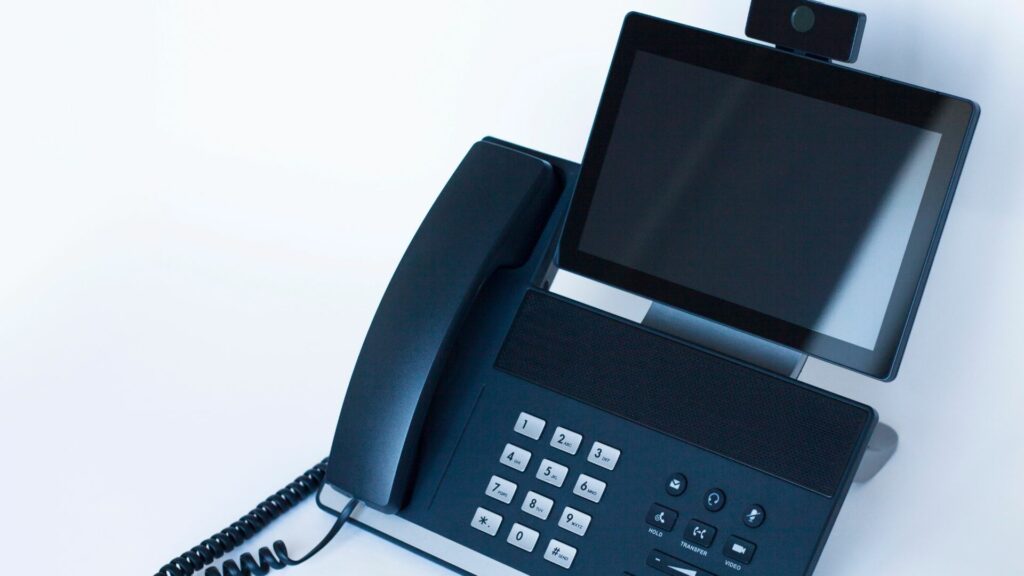Are you constantly missing important calls because you’re not always at your desk? Do you feel overwhelmed by the sheer number of voicemails you have to wade through daily, only to realize you’ve missed a crucial client call or an urgent team update? Missing calls can mean missing opportunities, and in today’s fast-paced business environment, that can spell disaster for your productivity and bottom line.
Think about the last time you missed an important call. Maybe it was a potential client ready to sign a big deal or a critical update from your team that required immediate action. How did that make you feel? Frustrated? Stressed? Missing these calls doesn’t just inconvenience you—it can lead to lost revenue, strained relationships, and a tarnished professional reputation. The constant worry about missing calls can weigh heavily on your mind, distracting you from other important tasks and diminishing your overall efficiency.
Now, imagine a solution where you never miss an important call again, no matter where you are. Introducing our state-of-the-art VOIP Call Forwarding service. With our seamless call forwarding system, you can direct calls to any device of your choice—be it your mobile phone, another desk phone, or even a colleague’s phone—ensuring you stay connected at all times. Our service is designed to be easy to set up and manage, giving you full control over your call-forwarding preferences with just a few clicks. Say goodbye to missed opportunities and hello to enhanced productivity and peace of mind. With our VOIP Call Forwarding, you can focus on what truly matters, knowing you’ll never miss a critical call again.
What is VOIP Call Forwarding?
Voice over Internet Protocol (VoIP) call forwarding is a feature of modern phone systems that allows incoming calls to be redirected to another phone number or device. This technology is ideal for businesses and individuals who always need to stay connected, no matter where they are. Unlike traditional landline phone systems, VoIP call forwarding uses an internet connection to transfer the call, making it a versatile option for mobile devices, office phones, and even desk phones.
VOIP call forwarding ensures that you never miss important business calls. It provides flexibility, allowing you to manage your communication effectively whether you’re in the office, at home, or on the go. Thousands of businesses have adopted VOIP phone systems for call forwarding and the plethora of other features that enhance customer service and operational efficiency.
Definition of VOIP Call Forwarding
VOIP call forwarding is a service feature of phone systems that enables an incoming call to be rerouted to another destination, such as a mobile phone, another office phone, or even a voice mail. With this feature, businesses can ensure that customer calls, inbound inquiries, or any essential communication are not missed when the intended recipient is unavailable.

The beauty of VoIP call forwarding lies in its ability to divert numbers anytime, adjust to the user’s schedule and ensure uninterrupted connectivity during business hours or whenever required. It is often paired with other functions like auto attendants, which can help guide the caller to the correct department or provide them with helpful information, increasing customer service efficiency.
How VOIP Call Forwarding Works
VoIP call forwarding operates by relaying the call from the original recipient to the chosen forwarding destination using an internet connection. When an incoming call arrives and the forwarding feature is activated, the VoIP service system instantaneously diverts the call to the pre-set number or device. This occurs seamlessly, without the caller knowing their call is being forwarded, providing a professional customer experience.
To understand how this technology functions, let’s break it down into easy-to-digest points:
- An incoming call is made to your VoIP phone number.
- The VoIP system detects whether the call should be answered or forwarded based on your settings.
- If forwarding is set, the system redirects the call to the specified mobile device, landline, or other designated numbers.
- If the call is unanswered, depending on the settings, it can be further forwarded to a voicemail system where the caller can leave a message for later retrieval.
This feature is flexible enough to handle multiple scenarios like unanswered calls, calls received outside business hours, or when the user needs to switch between different devices. It ensures that there is no break in communication, increases the reachability of users, and augments the overall efficiency of managing incoming and outbound calls across various platforms, from cell phones to VoIP phones.
In conclusion, VoIP call forwarding is essential for modern businesses that demand constant connectivity and a robust, customer-focused communication strategy. With the ability to easily forward calls to any device, over any internet or mobile network, it empowers businesses and individuals to create a seamless, integrated communication ecosystem.
Benefits of VOIP Call Forwarding
VoIP call forwarding comes with many benefits that can vastly improve how businesses and individuals communicate. From never missing a call to integrating multiple devices, this feature’s advantages contribute to enhanced efficiency and customer satisfaction. Below are key benefits highlighting the value VoIP call forwarding adds to any organisation or personal communication strategy.

Convenience and Accessibility
VoIP call forwarding epitomises convenience, as it’s designed to ensure you can always be reached, whether at your desk or on the move. It eliminates the geographical limitations often associated with traditional phone systems, providing accessibility no matter where you or your team members are.
- You can forward calls to your mobile phone, allowing you to handle business calls on the go.
- Individuals working from home or those often travelling can stay connected with their office phone system.
- Another convenient option is simultaneous ringing, where multiple devices can ring at once, ensuring someone is always available to answer important calls.
Easy configuration via an online dashboard or mobile app adds to this convenience, making the management of call-forwarding settings straightforward and user-friendly. With VoIP call forwarding, anyone can maintain a professional presence regardless of their physical office location.
Cost-Effectiveness
The cost savings associated with VoIP call forwarding are significant, especially for businesses. Traditional phone systems often incur extra charges for call forwarding services and international or long-distance calls can be exorbitantly priced. On the other hand, VoIP call forwarding typically comes as part of the VoIP service package, reducing or eliminating additional costs.
- Reduces or eliminates costs associated with forwarding calls, especially internationally.
- As calls are made over the Internet, long-distance fees are often much lower than traditional telephony charges.
- Integrating mobile devices into the VoIP system can decrease the need for multiple separate phone contracts.
For businesses, this can mean significant savings on telecommunication expenses. Reducing redundant infrastructure, such as multiple landlines, also contributes to overall cost efficiencies.
Flexibility and Scalability
VoIP call forwarding is highly flexible and can be tailored to fit the specific needs of a business or individual user. Its scalability ensures that it can grow with your business, accommodating an increasing number of calls or expanding operational needs without substantial infrastructure investment.
- Customisable rules can be set for call forwarding – by time of day, caller ID, or the number of rings before forwarding.
- Rapid scaling up or down to match business growth or seasonal fluctuations without extensive hardware changes.
- Forwarding rules can be quickly modified to adapt to staff availability or business demand changes.
Businesses can start with a basic setup and expand their VoIP services as they grow, ensuring they always have just what they need. This adaptability is particularly advantageous for businesses that experience varying call volumes throughout the year.
By leveraging the benefits of VoIP call forwarding, businesses and individuals can enjoy a blend of accessibility, cost-effectiveness, and flexibility that traditional phone systems simply cannot match. Additionally, using VoIP adapters allows businesses to integrate existing analog phones into their VoIP networks, further enhancing this adaptability. This makes VoIP an essential tool for modernizing communication systems and maximizing their reach to clients and customers.
Key Features of VOIP Call Forwarding
VoIP call forwarding is empowered to redirect inbound calls to multiple numbers, enhancing reachability and ensuring no call goes unanswered. This is especially beneficial for teams and businesses where customer interactions are critical. Here’s how it works:
- Primary and secondary numbers: If unanswered, calls can first ring on the office phone and then be forwarded to a mobile device or another designated number.
- Group call forwarding: The system can simultaneously ring on all team members’ phones, ensuring that available personnel can handle customer inquiries promptly.
- Sequential ring: You can set a list of numbers that the call will cycle through, giving multiple chances for different individuals or departments to address the call.

Time-Based Call Forwarding
Time-based call forwarding is an intelligent feature of VoIP phone systems that allows users to direct calls to different numbers or voicemail, depending on the time of day or week. This aligns with business hours or personal availability, ensuring professionalism and work-life balance.
- Business hours routing: Configure the system to forward calls to business numbers during work hours and switch to personal numbers or voicemail after hours.
- Holiday and special event scheduling: Set up custom call forwarding rules for holidays or specific dates to manage call flow during anticipated closure or limited availability periods.
Customised Call Routing
With customised call routing, VoIP call forwarding transcends basic call redirection by giving users the control to define intricate rules based on various criteria:
- Caller ID routing: Prioritise important calls by forwarding them to specific devices or personnel when recognised by caller ID.
- VIP lists and block lists: Create lists that automatically route known contacts differently or prevent certain numbers from reaching you.
Voicemail Integration
Voicemail integration within VoIP call forwarding systems ensures that missed calls are always accounted for, presenting a professional image even when direct communication isn’t possible.
- Voicemail to email: Voicemails can be automatically converted to a sound file and sent to an email address for easy playback and management.
- Personalized greetings: Set custom voicemail messages based on the caller or time of day to provide a tailored experience.
Call Screening and Routing Options
Call screening and routing options allow users to handle inbound calls more efficiently based on predefined criteria.
- Auto attendant: An automated system that greets callers and directs them to the appropriate extension or department.
- Whitelist and blacklist filters: Allow certain numbers through while blocking others, maintaining control over inbound call traffic.
- Interactive Voice Response (IVR) systems: Utilising voice prompts and menu options to direct callers to the right resource or information.
By incorporating these dynamic features, VoIP call forwarding positions itself as a powerful tool for managing communication, accommodating various scenarios and user preferences for personal and business use.
Selecting a VOIP Service Provider
When choosing a VoIP service provider, there are several important considerations. Ensure the provider offers a robust call forwarding feature as part of their VoIP phone systems. Look for the ability to forward to multiple devices, the flexibility to create complex routing rules, and the availability of features like time-of-day forwarding and voicemail integration.
| Considerations | Description |
|---|---|
| Features | Look for providers offering comprehensive call forwarding options, including group and sequential ringing. |
| Reputation | Check customer testimonials and reviews to gauge the reliability and quality of service. |
| Customer Support | Ensure the provider has a responsive customer service team for troubleshooting and assistance. |
| Cost | Compare pricing to find a plan that fits your budget without compromising essential features. |
| Scalability | Choose a provider that can grow with your business, accommodating an increasing number of lines or more complex needs. |
You can select a VoIP service provider that aligns with your communication requirements by carefully evaluating these factors.
Configuring Call Forwarding Settings
Once you’ve signed up with a VoIP provider, the next step is to configure your call-forwarding settings. Access your VoIP account’s dashboard and navigate to the call forwarding section. Here, you can input the phone numbers you wish to use for forwarding, define the criteria under which calls should be forwarded, and set up advanced features like sequential ringing or time-based forwarding schedules.
- Step 1: Log in to your VoIP dashboard.
- Step 2: Locate the call forwarding or call handling section.
- Step 3: Input primary and secondary numbers for forwarding.
- Step 4: Set up the order and conditions for forwarding calls, such as time of day or caller ID.
- Step 5: Enable additional features like voicemail to email or customised messages.
Remember to save your settings and ensure that any changes you make apply immediately or as scheduled.
Comparison: VOIP Call Forwarding vs Traditional Call Forwarding
When managing incoming calls, businesses must choose between VoIP (Voice over Internet Protocol) call forwarding and traditional call forwarding methods. With VoIP call forwarding, calls are routed over the internet, while traditional call forwarding uses the public switched telephone network (PSTN) to relay calls from one phone to another.
Cost Comparison
| Aspect | VoIP Call Forwarding | Traditional Call Forwarding |
|---|---|---|
| Initial Setup Cost | Usually low, with minimal equipment | Higher due to physical infrastructure |
| Operational Costs | Reduced due to internet usage | Standard rates apply, often higher |
| Maintenance & Upgrade Costs | Generally lower and easier to update | It can be costly and complex |
| Long-Distance Charges | Typically lower or included in plans | It can be significant depending on the plan |
VoIP call forwarding often provides a more cost-effective alternative to traditional methods. With fewer overhead expenses for equipment and the ability to use existing internet connections, businesses can save on initial setup costs. Operational costs are also reduced, as VoIP services usually offer lower rates for local and long-distance calls, often bundling these as part of service packages. Maintenance and system upgrades are typically more straightforward with VoIP due to its reliance on software rather than physical hardware.
In contrast, traditional call forwarding requires a physical connection, which can result in higher installation and maintenance costs. Additionally, long-distance charges are common, which can increase businesses’ overall operational expenses.

Features and Flexibility Comparison
VoIP call forwarding boasts various features and flexibility that may not be available with traditional methods. Here are some key differences:
| Feature | VoIP Call Forwarding | Traditional Call Forwarding |
|---|---|---|
| Customisation | High, with advanced settings | Limited, with basic options |
| Accessibility | Accessible from any device | Typically limited to landlines |
| Integration with other systems | Easy integration with apps | Rarely integrates seamlessly |
| Scalability | Highly scalable | Limited by physical infrastructure |
VoIP systems offer advanced customisation options, allowing businesses to set rules for when and how calls are forwarded, such as time-based routing or forwarding to multiple numbers simultaneously. Users can typically manage these features easily through an online dashboard. Accessibility is another strength of VoIP, permitting users to forward calls to various devices, including mobile phones, desktops, or tablets, regardless of location, as long as an internet connection exists.
Furthermore, VoIP systems often integrate smoothly with other business applications, enhancing productivity and customer service capabilities. They are also highly scalable, enabling businesses to add or remove lines without new physical wiring.
Traditional call forwarding offers more basic features, focusing on routing calls to one or several predetermined numbers. Flexibility can be limited, as it is tied to a landline phone system, making it less convenient for mobile or remote work environments. Scalability can also be an issue, often requiring significant infrastructure changes to add lines or alter services.
What is VOIP Call Forwarding?
Voice over Internet Protocol (VoIP) call forwarding is a feature of modern phone systems that allows incoming calls to be redirected to another phone number or device. This technology ensures you never miss important business calls, providing flexibility to manage communication effectively, whether in the office, at home, or on the go.
How Does VOIP Call Forwarding Work?
VoIP call forwarding operates by using an internet connection to relay the call from the original recipient to the chosen forwarding destination. When an incoming call arrives, the VoIP system diverts the call to the pre-set number or device, occurring seamlessly without the caller knowing their call is being forwarded.
What Are the Benefits of VOIP Call Forwarding?
Convenience and Accessibility: Forward calls to any device, ensuring you’re reachable anywhere.
Cost-Effectiveness: Reduces or eliminates extra costs associated with traditional call forwarding, especially for international calls.
Flexibility and Scalability: Customizable rules for call forwarding and the ability to scale with business needs.
What Key Features Should I Look for in VOIP Call Forwarding?
Multiple Number Forwarding: Ability to forward calls to several numbers sequentially or simultaneously.
Time-Based Call Forwarding: Redirect calls based on the time of day or week.
Customized Call Routing: Set rules based on caller ID or other criteria.
Voicemail Integration: Ensure missed calls are sent to voicemail, which can be forwarded to email.
How Do I Select a VOIP Service Provider?
Considerations include: Features: Comprehensive call forwarding options.
Reputation: Customer testimonials and reviews.
Customer Support: Responsive service team.
Cost: Budget-friendly plans.
Scalability: Ability to grow with your business needs.
How Do I Configure Call Forwarding Settings?
- Log in to your VoIP dashboard.
- Locate the call forwarding or call handling section.
- Input primary and secondary numbers for forwarding.
- Set the order and conditions for forwarding calls.
- Enable additional features like voicemail to email or customized messages.
- Save settings to apply changes immediately or as scheduled.
How Does VOIP Call Forwarding Compare to Traditional Call Forwarding?
Cost Comparison:
VoIP Call Forwarding: Typically lower initial setup and operational costs and lower long-distance charges.
Traditional Call Forwarding: Higher setup costs, long-distance charges, and maintenance expenses.
Features and Flexibility Comparison:
VoIP Call Forwarding: Advanced customization, accessible from any device, easy integration with other systems, highly scalable.
Traditional Call Forwarding: Basic features, limited to landlines, rarely integrates seamlessly, limited scalability.
Final Words
VoIP call forwarding offers a transformative approach to managing your business communications, ensuring you stay connected and responsive no matter where you are. By leveraging the power of the internet, VoIP systems provide unparalleled flexibility, cost savings, and advanced features that traditional phone systems cannot match. From seamless call redirection and customizable routing to comprehensive voicemail integration, VoIP call forwarding equips you with the tools to maintain professional communication standards and enhance customer satisfaction.
Choosing the right VoIP service provider is crucial to unlocking these benefits. By focusing on providers with robust call-forwarding capabilities, excellent customer support, and scalable solutions, you can tailor a communication system that grows with your business. VoIP call forwarding streamlines your operations and positions your business for future success in an increasingly mobile and connected world.
We’d love to hear your thoughts and experiences with VoIP call forwarding. Have you tried it in your business? What features do you find most beneficial? Share your comments and join the conversation below!


